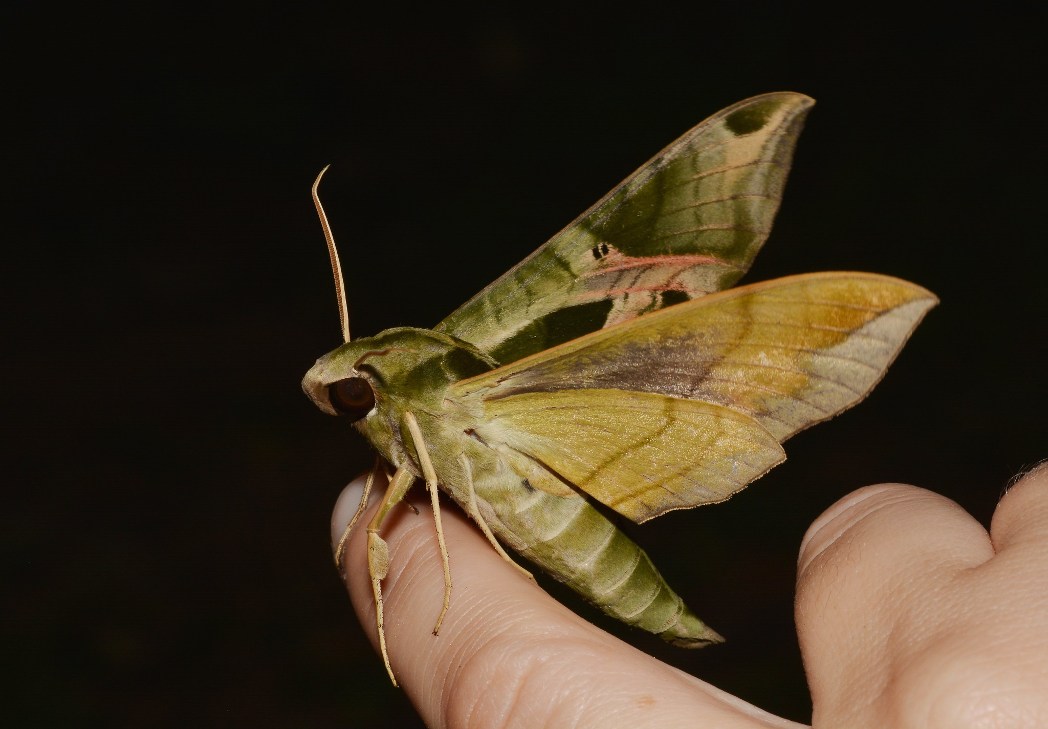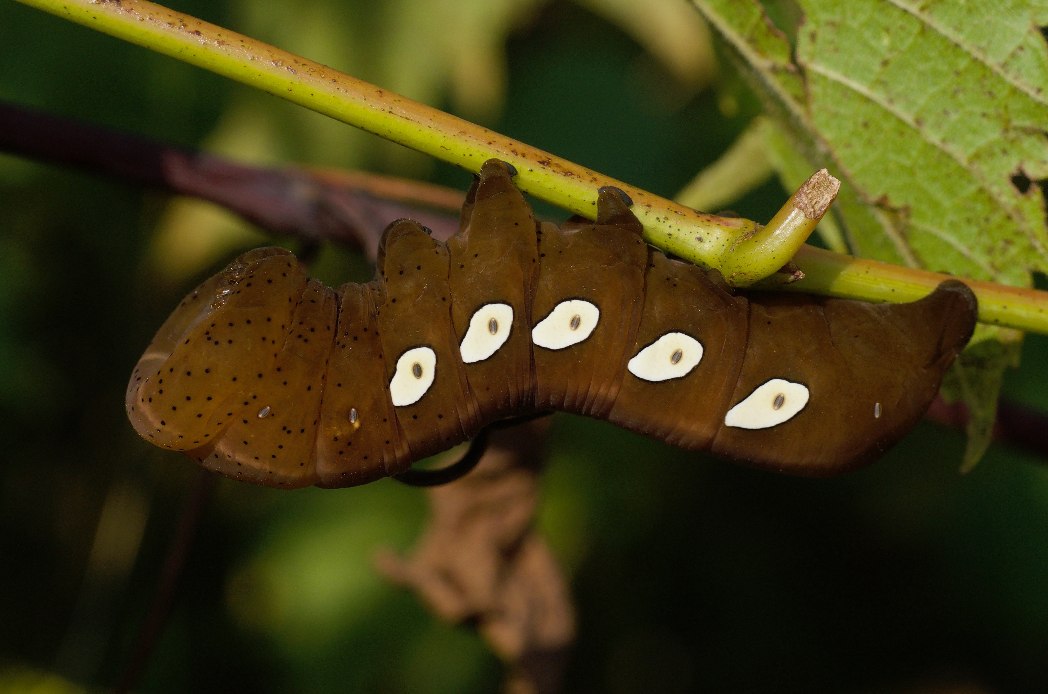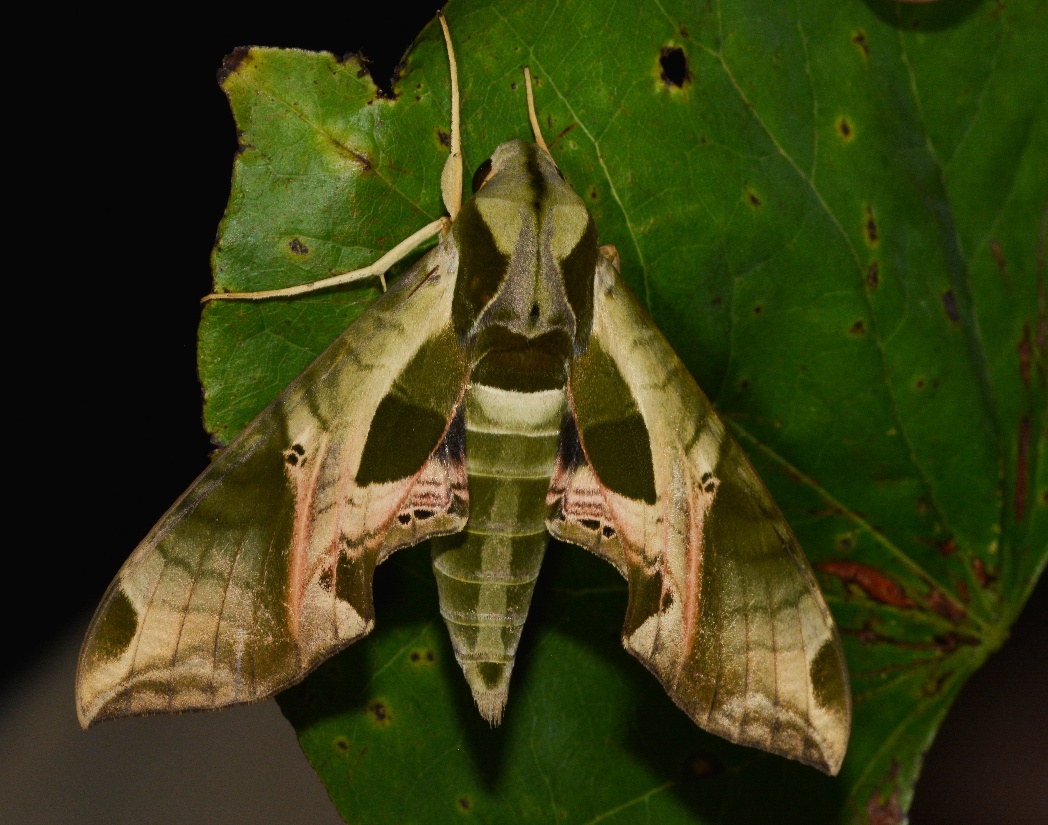Pandorus sphinx
“Know your native pollinators” is a series of articles that will help you identify and appreciate Florida’s varied pollinators, including bees, wasps, butterflies, moths, beetles, flies, birds and bats. Pictured above: Pandorus sphinx (Eumorpha pandorus) by Andy Reago and Chrissy McClarren (CC BY 2.0).
Often overlooked, moths are vital pollinators. Keep an eye out for the Pandorus sphinx moth at dawn or dusk. You’ll need to look carefully to find one of these spectacularly camouflaged creatures.
CLASSIFICATION
Class: Insecta
Order: Lepidoptera
Family: Sphingidae
Genus species: Eumorpha pandorus
IDENTIFICATION
Pandorus sphinx moths have adapted to resemble the world around them with a camouflaged pattern of color blocks in mossy green and brown. This species is a type of sphinx (or hawk) moth, the name given to moths in the Sphingidae family due to their large size. The Pandorus sphinx tends to have a wingspan of three to four inches, with narrow, aerodynamic wings that make them fast in flight. This moth has a hairy body, large eyes and a long proboscis for tube-shaped flowers. In fact, moths in the sphinx family have the longest tongue of any lepidoptera.

FORAGING PREFERENCES
The larvae feed on grape (Vitis spp.) and Virginia creeper (Parthenocissus quinquefolia) leaves. The adults nectar on Milkweed (Asclepias spp.), as well as flowers in the nightshade family, including Carolina horsenettle (Solanum carolinense), Christmasberry (Lycium carolinianum) and Bird pepper (Capsicum annuum).
HABITAT
In North America, the Pandorus sphinx ranges from Wisconsin and Texas east to Novia Scotia and South Florida. They are nocturnal and tend to be seen at dawn or dusk. Their preferred habitat is along the edges of forests and streams, but they are not usually found in deeply wooded areas.
DID YOU KNOW?
Although the caterpillars are active at night, making them difficult to find, if you search for them with a UV flashlight, the larvae will glow! This is also true of many other caterpillar species.

LIFE CYCLE
Caterpillars start out green and have a long, curved caudal horn on their back end. Halfway in the growth cycle of the caterpillar, the horn disappears and becomes an eye-shaped button. Caterpillars can be pink, green, orange, light or dark brown, or black. They have prominent white spots along their sides. Each of these white spots surrounds an air opening, or spiracle. When ready, they pupate underground. Their cocoons are dark and slender. You can find this moth in flight from April to November.
References:
- Buchman, Steve.“Hawk Moths or Sphinx Moths (Sphingidae).” U.S. Forest Service. Jun 2022.
- Insect Identification. “Pandorus Sphinx Moth (Eumorpha pandorus)”. Jan. 4 2022.
- Kobak, Cindi. “Pandorus sphinx caterpillar.” Bio Bits. Menunkatuck Audubon Society. 2022.
- Marlos, Daniel. “Pandorus sphinx.” What’s That Bug? Jul. 11, 2020.
- Sphingidae of the United States of America. “Eumorpha pandorus.” 2022.
- University of Wisconsin, Milwaukee. “Pandorus Sphinx (Family Sphingidae).” Jan. 25, 2011.

